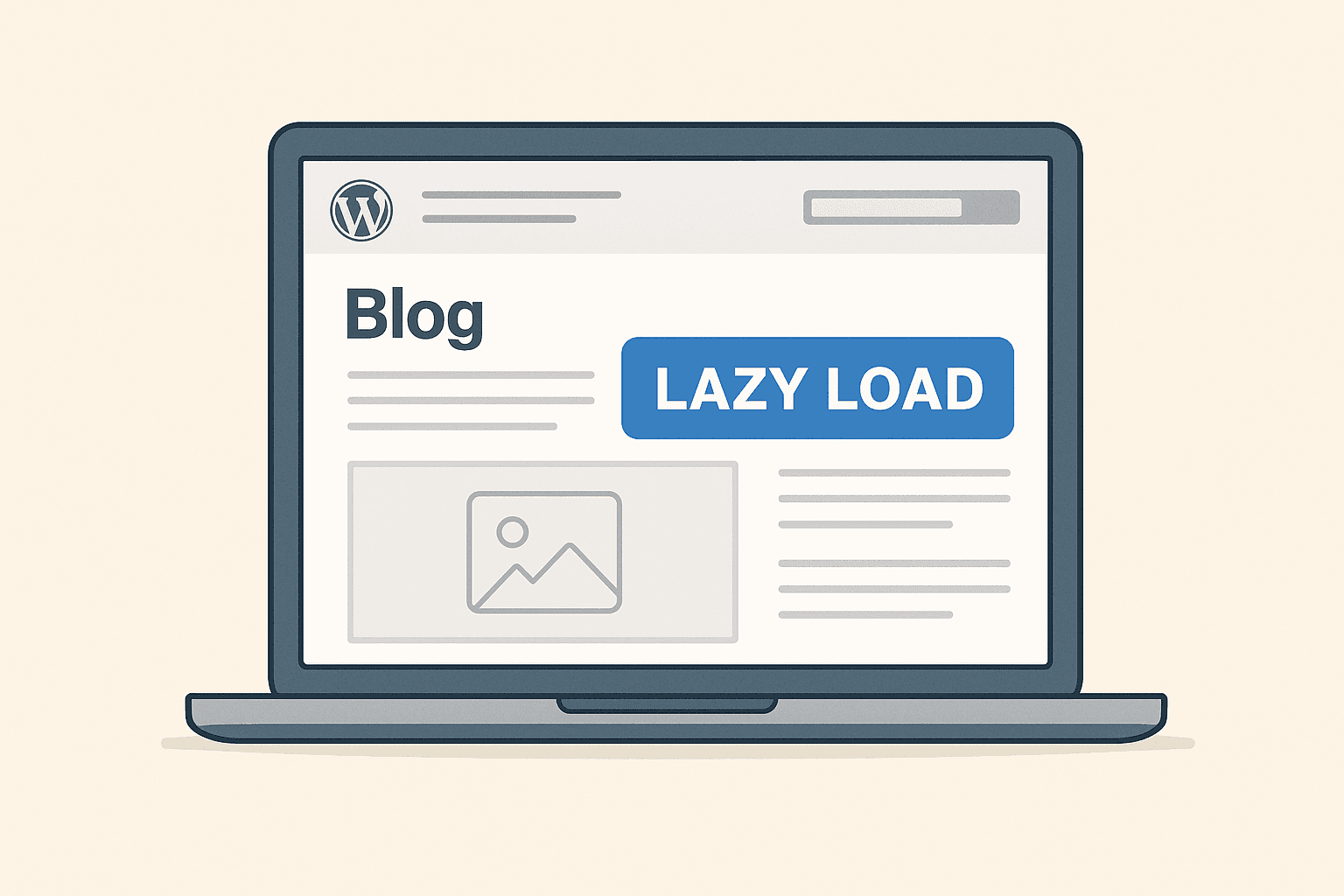Website speed matters. A slow-loading site can frustrate visitors, hurt your SEO rankings, and lead to lost sales. One of the easiest ways to improve your WordPress site’s performance is by lazy loading images.
Lazy loading is a technique that loads images only when they’re about to enter the user’s view. This means your site loads faster because it doesn’t have to load every image right away.
In this guide, you’ll learn exactly how to lazy load images in WordPress without needing to touch code.
Table of Contents
What Is Lazy Loading?
Lazy loading is a performance optimization strategy. Instead of loading all images on a page at once, it loads them only when needed. For example, if you have 20 images on a long blog post, lazy loading ensures only the top few are loaded initially. The rest load as the user scrolls down.
This reduces page size and server requests, which helps pages load faster.
Why Lazy Loading Matters for WordPress Websites
Here’s why you should enable lazy loading on your WordPress site:
- Improved Page Speed: Faster websites provide better user experiences.
- Better SEO: Page speed is a ranking factor in Google’s algorithm.
- Lower Bounce Rates: Users stay longer when pages load quickly.
- Reduced Bandwidth Usage: Especially important for mobile users.
- Improved Core Web Vitals Score: Key for SEO and user satisfaction.
How to Lazy Load Images in WordPress (The Easy Way)
1. Use Native Lazy Loading in WordPress (Built-In)
Since WordPress 5.5, lazy loading is automatically enabled for all images that use the <img> tag. This means most modern WordPress themes already lazy load images out of the box.
However, this native lazy loading relies on browser support. While most modern browsers support it, it may not work in every case. Also, some themes or custom-coded elements might bypass this feature.
To double-check if native lazy loading is working:
- Open your website in Chrome.
- Right-click on any image and inspect the HTML.
- Look for
loading="lazy"in the<img>tag.
If it’s missing, your theme or plugin might be stripping it out.
2. Use a WordPress Plugin to Lazy Load Images
If your theme doesn’t support native lazy loading properly—or you want more control—you can use a plugin. Here are some of the best options:
a) WP Rocket
WP Rocket is a premium caching plugin that includes lazy loading. It’s easy to enable:
- Go to Settings > WP Rocket > Media
- Check the box that says “Enable for images”
- Optionally enable lazy loading for iframes and videos
WP Rocket is great because it optimizes everything in one place—caching, minification, and lazy loading.
b) a3 Lazy Load
This is a free plugin built specifically for lazy loading:
- Install it from Plugins > Add New
- Search “a3 Lazy Load” and activate
- Go to Settings > a3 Lazy Load
- Configure what content to lazy load: images, iframes, videos, widgets, etc.
This plugin also works well with page builders and WooCommerce.
c) Smush by WPMU DEV
Smush is a popular image optimization plugin that also supports lazy loading:
- Go to Smush > Lazy Load
- Enable it and adjust settings based on your theme and layout
It’s a great all-in-one tool if you also want to compress and resize images automatically.
3. Optimize Image Sizes Before Lazy Loading
Lazy loading improves speed, but it works even better when your images are optimized beforehand. Here’s what to do:
- Resize images before uploading (use proper dimensions)
- Compress images using tools like TinyPNG or ShortPixel
- Use modern formats like WebP
Many plugins (like Smush or ShortPixel) also compress and convert images for you automatically.
4. Use Lazy Loading for Background Images and Videos
Lazy loading standard images is easy. But what if you have images set as background images in CSS or videos on your page?
Most basic lazy loading plugins won’t handle these. For that, you’ll need:
- WP Rocket (it supports iframe and video lazy loading)
- Lazy Load XT (for more advanced setup, including background images)
Or you can hire a developer to add JavaScript-based lazy loading for background images using Intersection Observer.
5. Test Your Website After Enabling Lazy Loading
Always test your site after enabling lazy loading. Here’s how:
- Use Google PageSpeed Insights to see if lazy loading is working.
- Open your site in a browser and scroll down slowly. You’ll notice images load right before they enter view.
- Check your console (right-click > Inspect > Console tab) for any JavaScript errors.
If you see broken image previews or blank spaces, adjust your plugin settings or try a different plugin.
Final Thoughts
Lazy loading is one of the easiest ways to speed up your WordPress site. It helps with user experience, SEO, and even server performance. If your site isn’t using it yet, you’re missing out on a simple fix that can make a big impact.
Whether you use WordPress’s built-in lazy loading, or install a plugin for more control, you’ll see the benefits almost immediately.
Want a faster WordPress site that ranks higher and converts better? Start with lazy loading your images.
Not sure how to speed up your WordPress site?
If lazy loading and optimization feel overwhelming, I can help. Hire me to make your site faster and more efficient.

